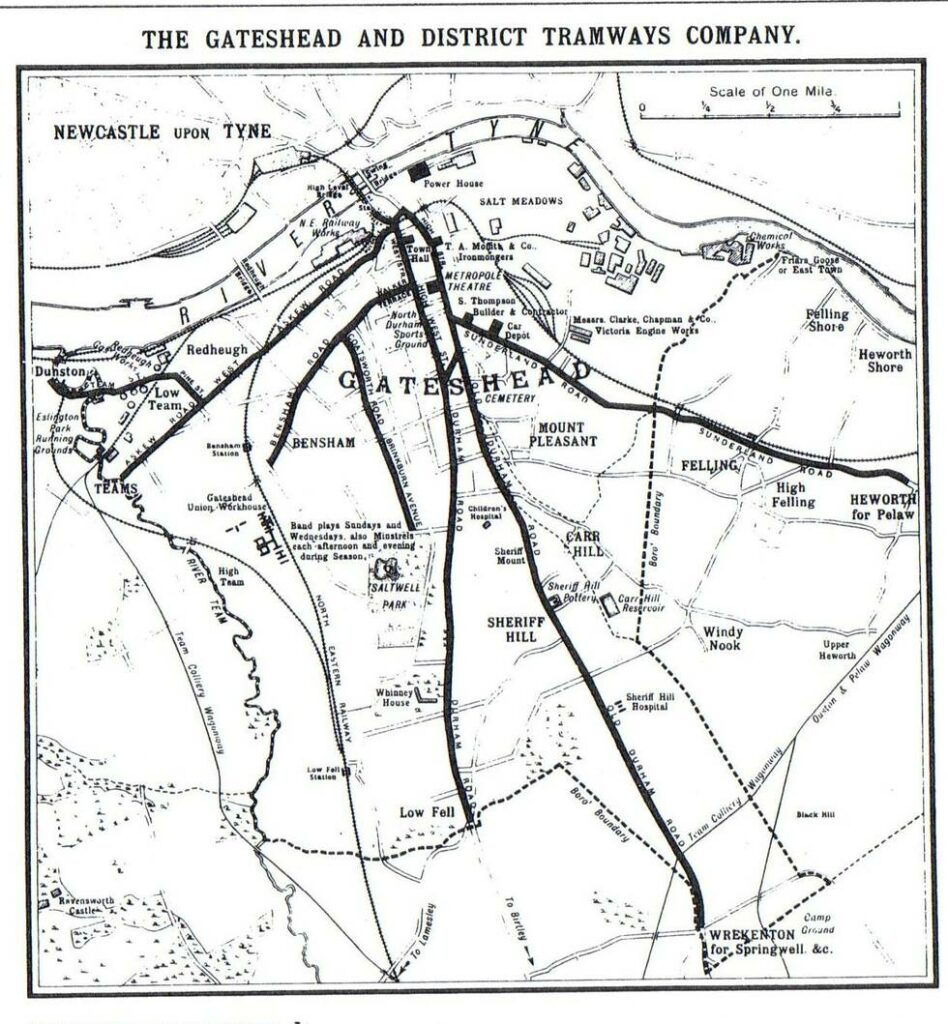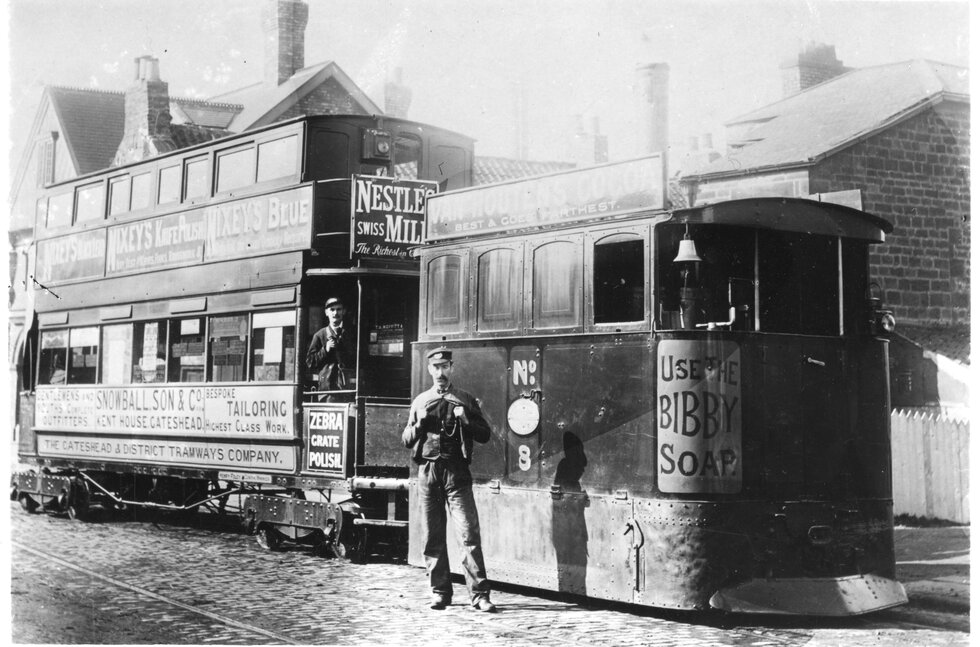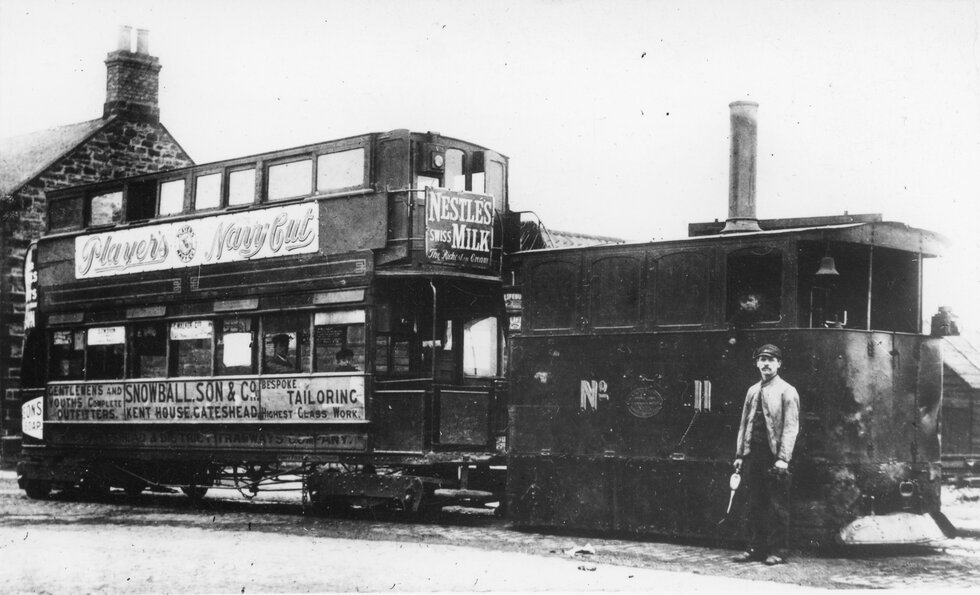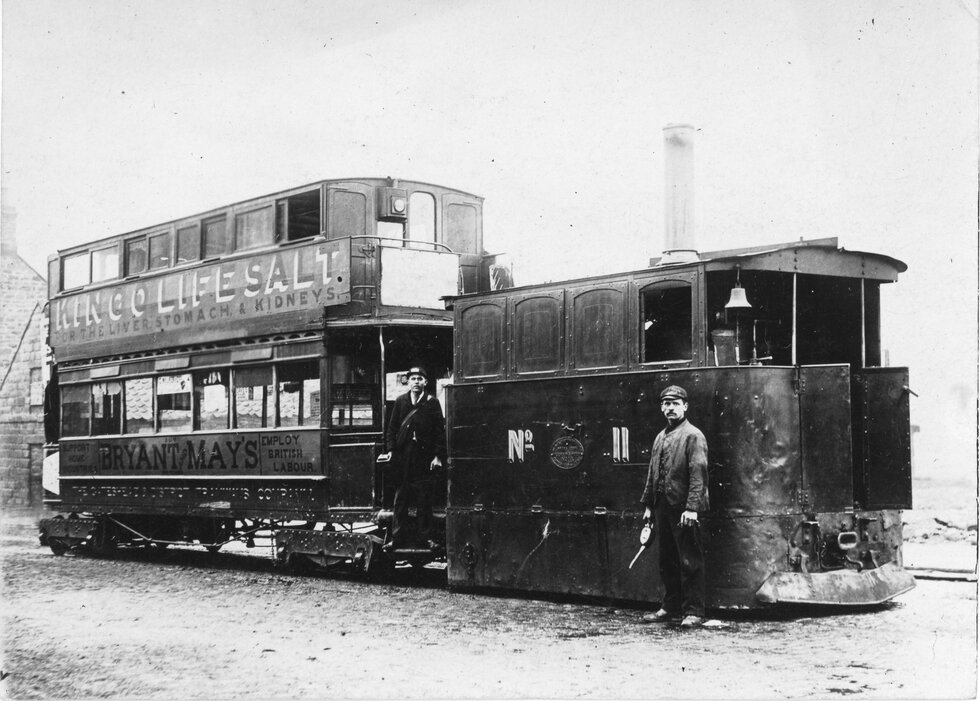On 22nd October 1883, the Gateshead and District Tramway Company began to operate a 6.22-mile-long standard gauge steam tramway. Unlike neighbouring Newcastle, many of Gateshead’s streets were too steep for horse trams to be practical, so some form of mechanisation was necessary. Three routes were constructed initially: from Gateshead station to Low Fell; Gateshead Station to Teams; and from High Street to Heworth. A fourth line, from High Street to Bensham, was authorised but not constructed. These lines are shown on the map below, which also depicts the additional lines that were constructed after the system was electrified and extended following the acquisition of the steam tramway by British Electric Traction in 1897.

1) Gateshead and District Tramways Company route map (undated). Source: The Northern General Transport Company (1983), The Gateshead and District Tramways Company: 100 years of service to the community in Gateshead 1883-1983.
Fifteen two-cylinder vertical boiler steam tram engines were bought from local firm Black Hawthorn & Company, and these were used with sixteen double deck bogie trailer cars. These were similar to a steam tram trailer in the collection at Crich Tramway Village – Dundee & District Tramways Co. No. 21, seen here: https://www.tramway.co.uk/trams/dundee-21/
Fourteen of the trailer cars were purchased from the Falcon Engine and Car Company in 1883/4. Although these were originally open topped, they were rebuilt with top covers after complaints from passengers about being showered with hot cinders and choked with fumes from the locomotive! A further two, somewhat larger trailers, were ordered from the Lancaster Carriage & Wagon Company, which were enclosed from the outset.

2) Gateshead & District Tramways steam tram no.8 in the depot yard with what is thought to be a Falcon-built trailer, around the late 1880s (National Tramway Museum collection).
The Company’s car-shed and engine house were in Sunderland Road. The tram engines were fuelled by coke (as stipulated by the Board of Trade), which cost 10/6 (equivalent to 52½ pence), delivery included.

3) Steam Tram No. 11 with driver and trailer pictured in the Sunderland Road depot yard, around the early 1890s (National Tramway Museum collection).
In addition to the regular services, Sunday School picnic treats were occasionally laid on from Teams to Low Fell, which involved two trailer cars that were coupled together and double-headed. The sight of this procession, accompanied by the ringing of bells, the sound of the locomotives and the smell of coke fumes mixed with hot oil must have left a memorable impression on passengers, pedestrians, and by-standers alike!

4) Steam tram No. 11 with the cab doors open, showing the conductor standing on the platform of a different trailer (National Tramway Museum Collection).
In November 1897, the British Electric Traction Company acquired a controlling interest in the Gateshead tramway, with a view to constructing an additional 6¼ miles of tramway and converting the entire system to electric operation. Steam tram services continued during the conversion process, ending on 8th May 1901 with electric tramcars taking over the following day.
British Electric Traction Company introduced a blanket one-penny fare on all its routes except one, which continued into the 1920s and helped to generate very impressive passenger numbers, highly profitable receipts and a remarkable 10% dividend for shareholders. A low bridge at the heart of the network meant that many of the electric tramcars were high-capacity single deckers, one of which – Gateshead no. 5 – is on display at Crich Tramway Village, as seen here: https://www.tramway.co.uk/trams/gateshead-5/
The Museum’s archives also contain a book on the tramways of Gateshead written by G.S. Hearse, together with a short history of the Gateshead and District Tramways Company by David Slater, which was published by Northern General Transport Company in 1983 to celebrate the centenary of the Gateshead and District Tramways Company – The Gateshead and District Tramways Company: 100 years of service to the community in Gateshead 1883-1983.
Image references:
- The Northern General Transport Company (1983), The Gateshead and District Tramways Company: 100 years of service to the community in Gateshead 1883-1983, page 12.
- National Tramway Museum collection.
- National Tramway Museum collection.
- National Tramway Museum collection.
Thanks to Museum volunteer Jim Dignan for producing this blog.
